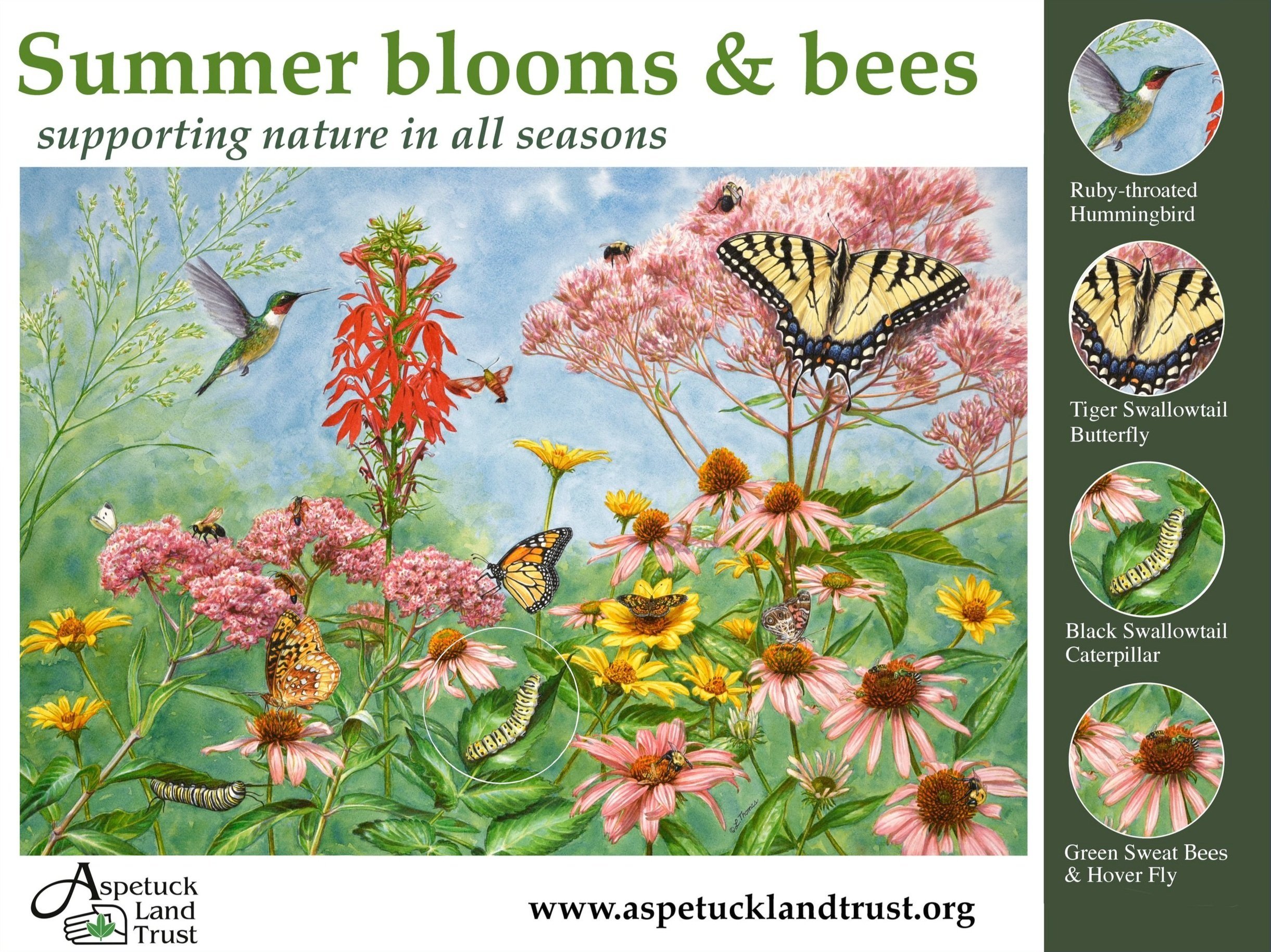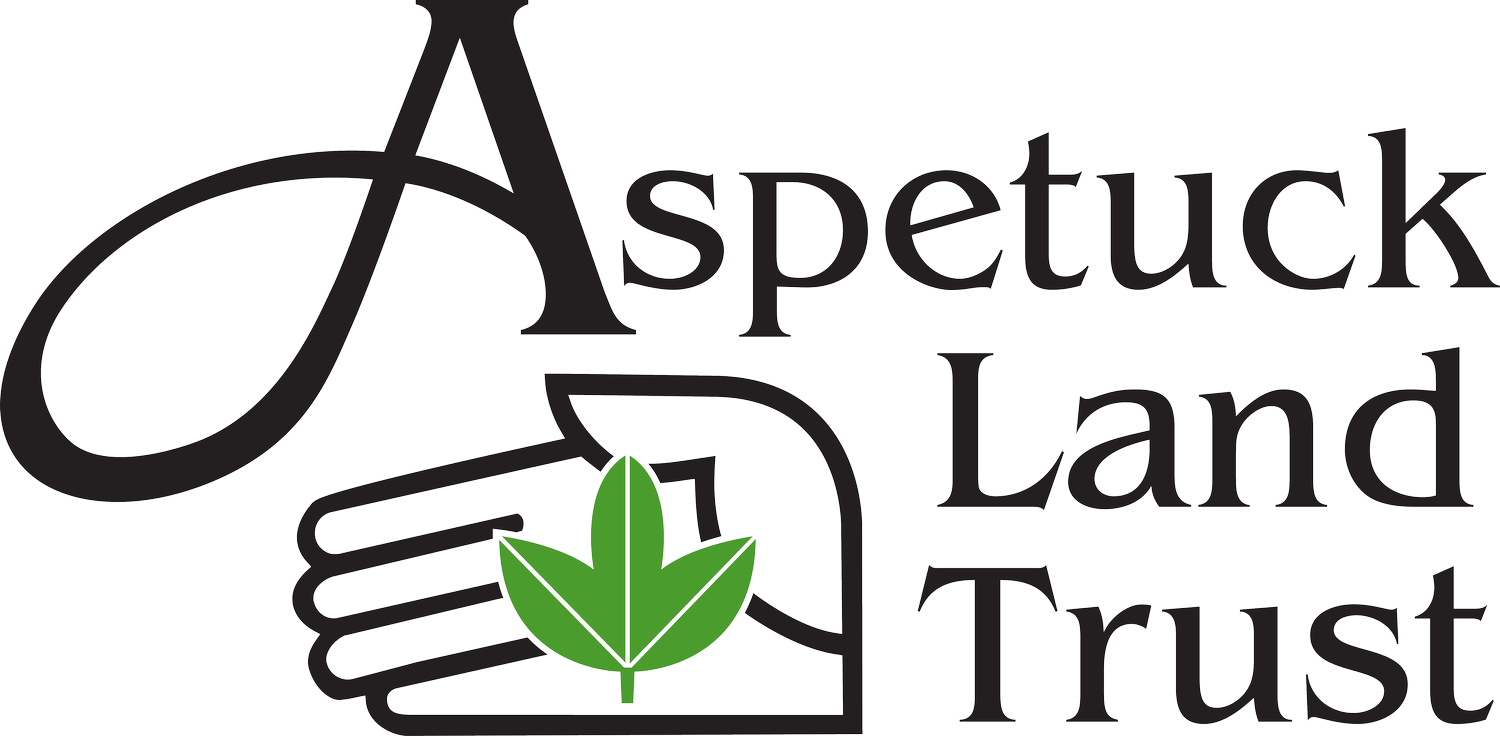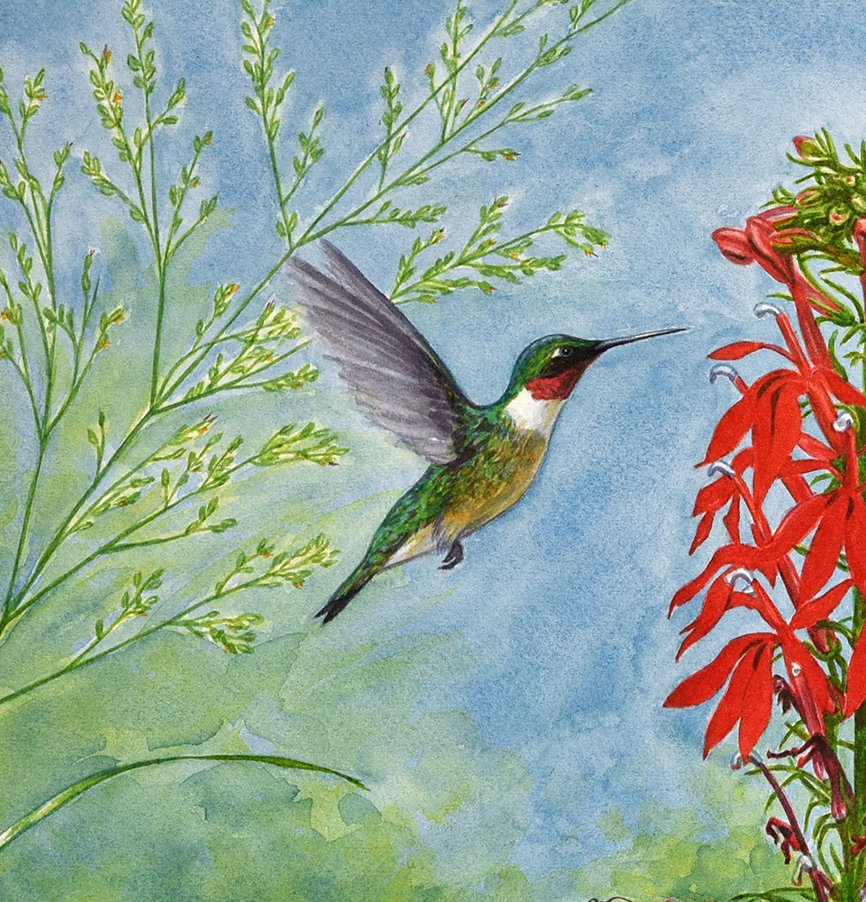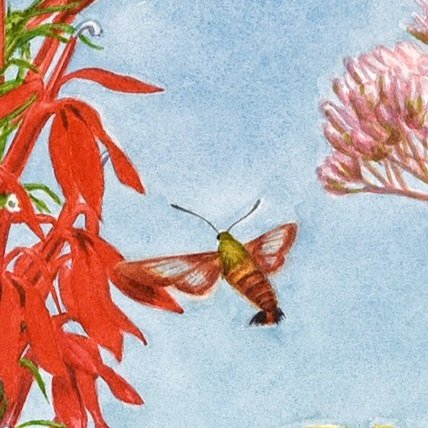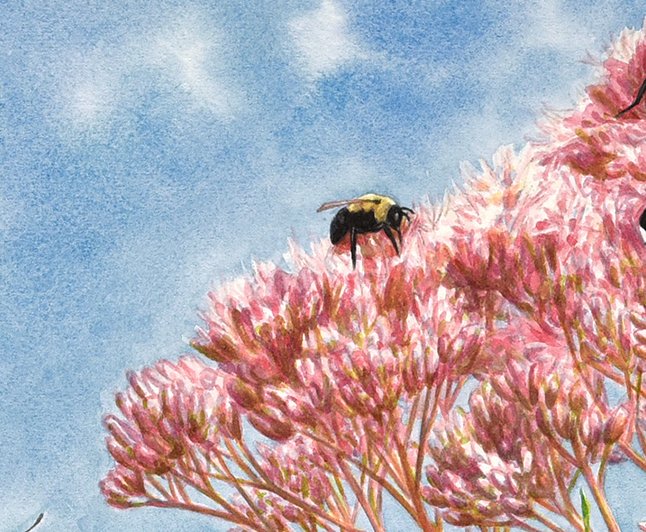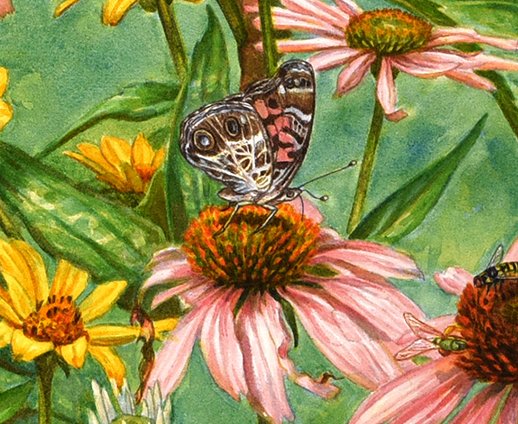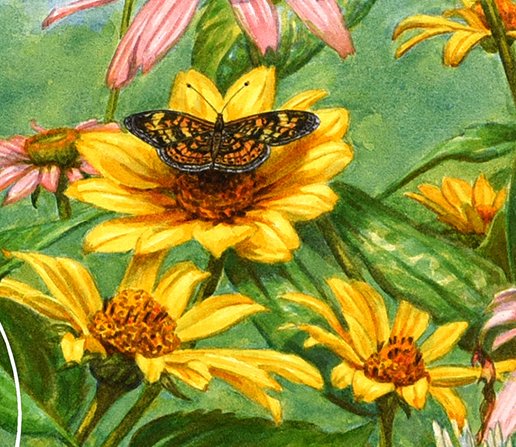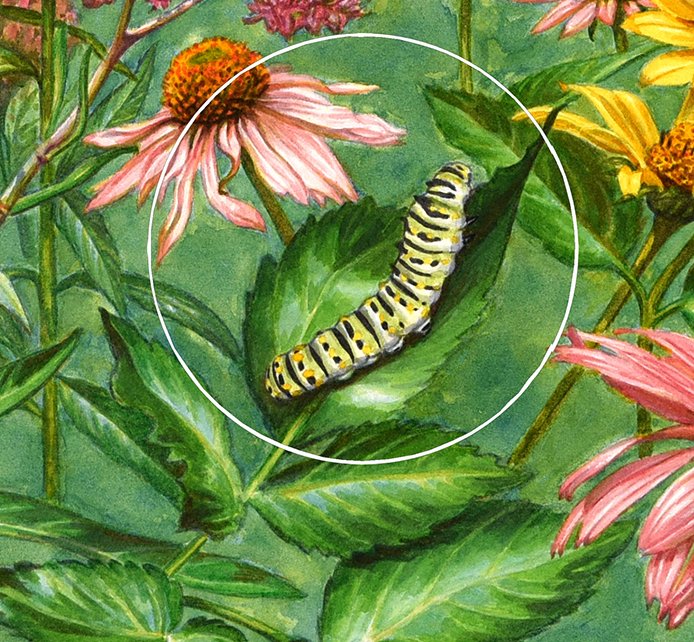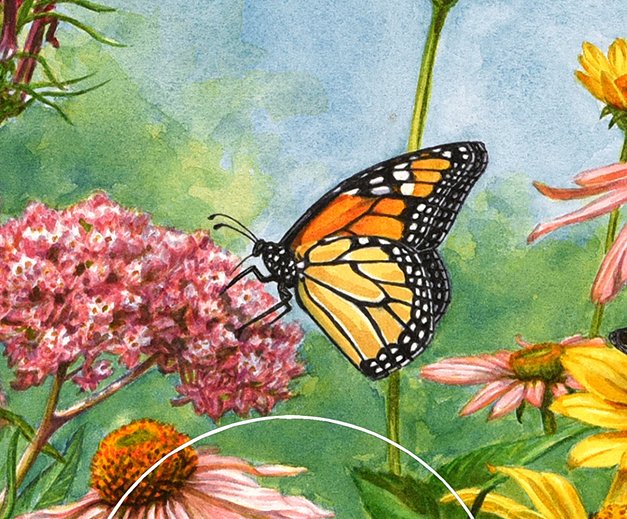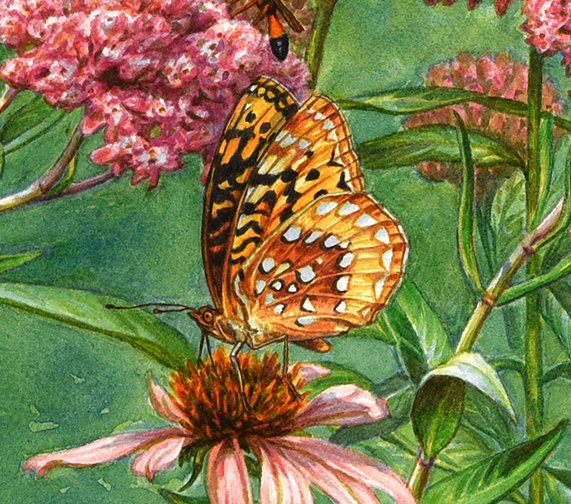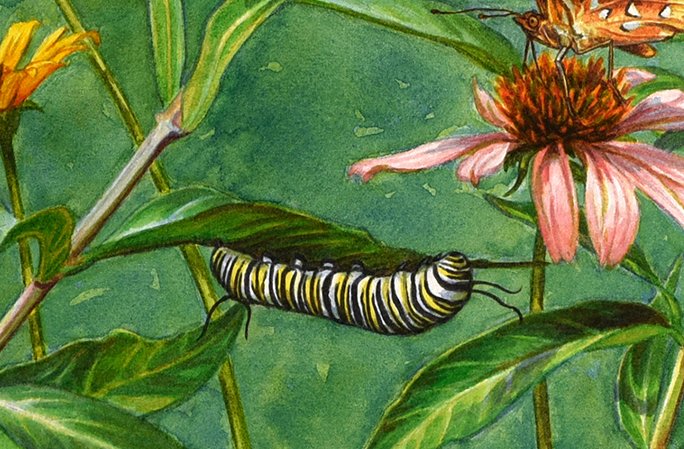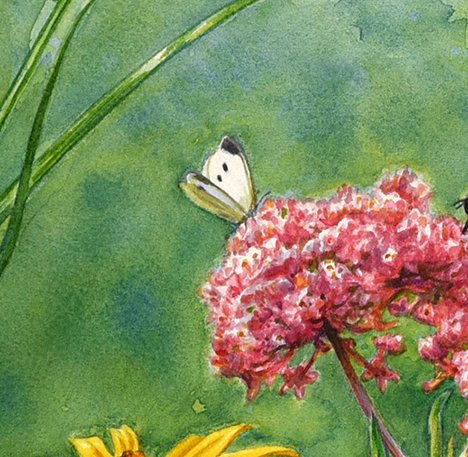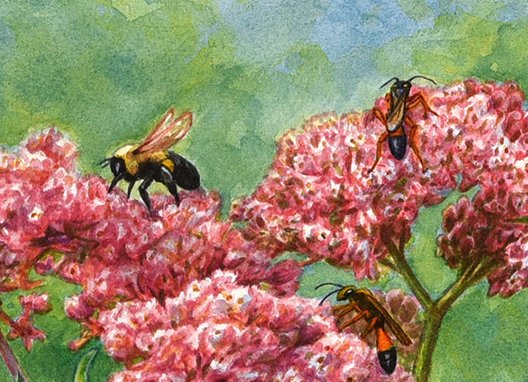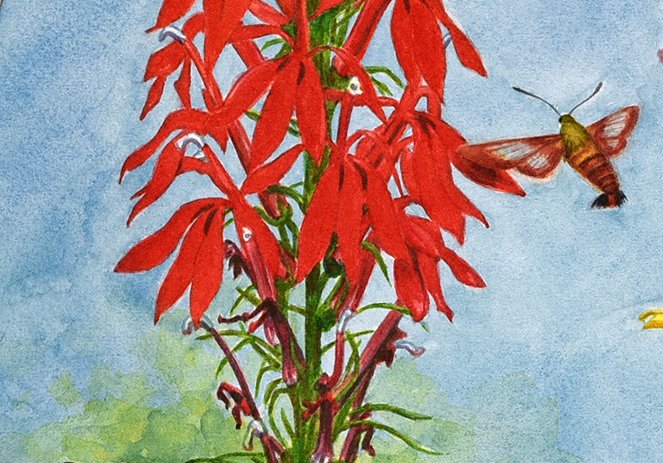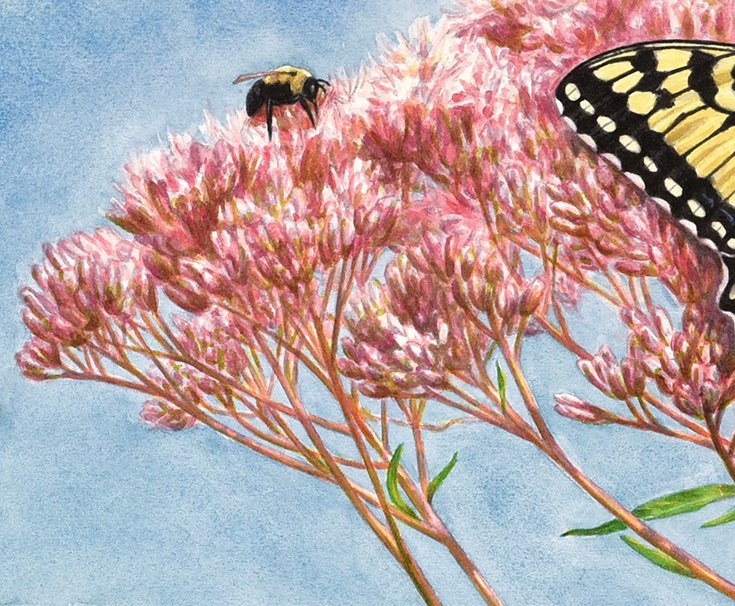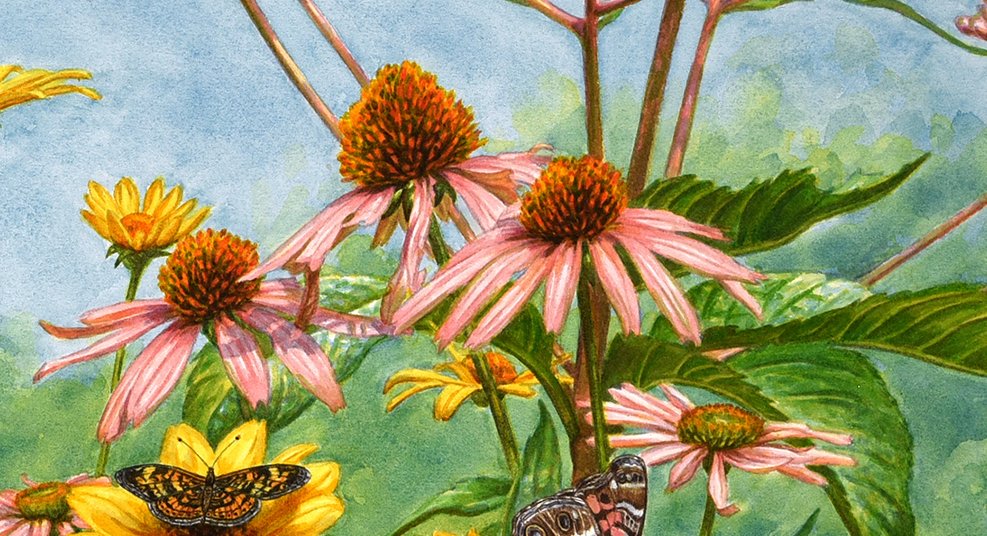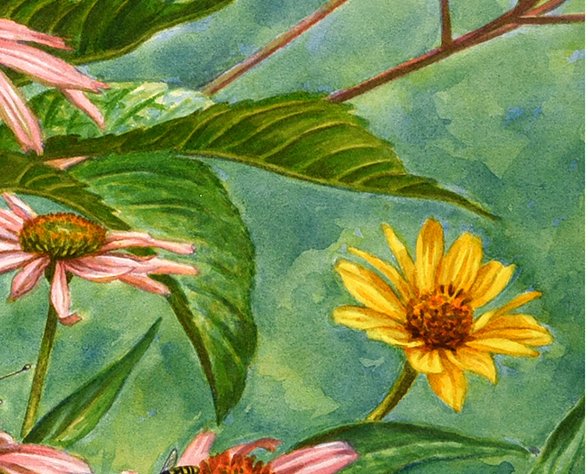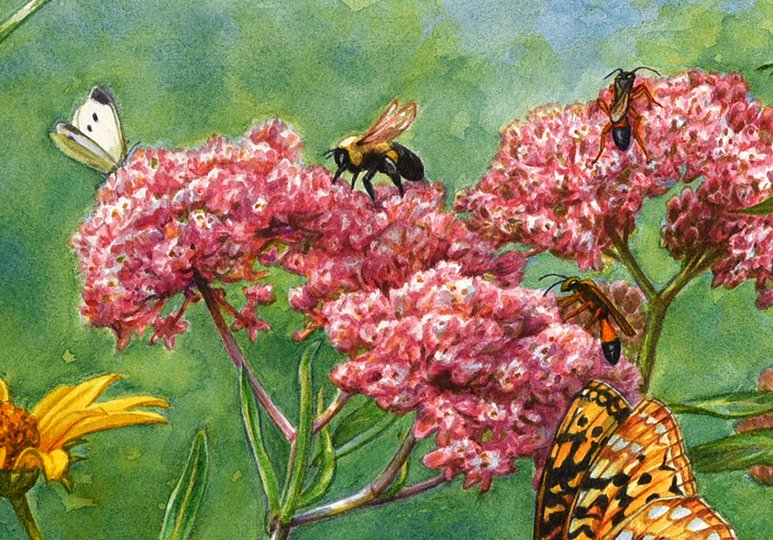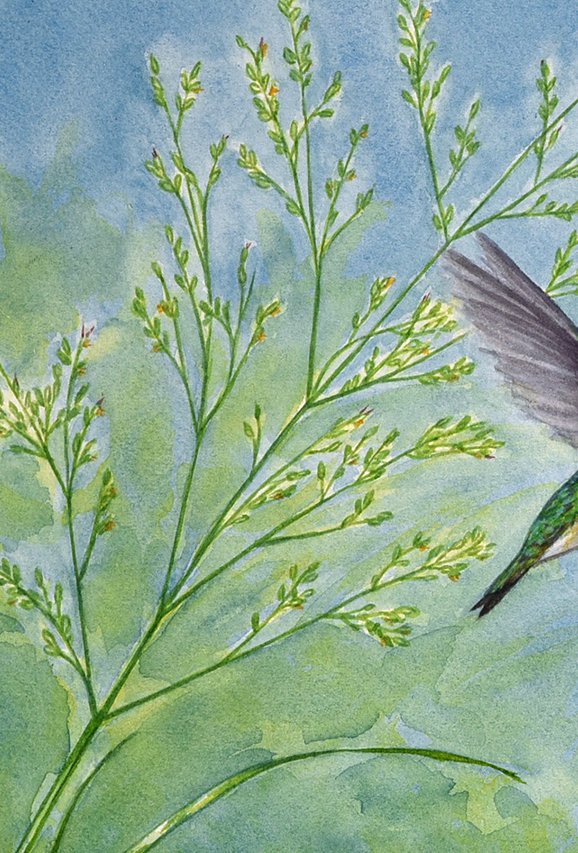Summer Blooms & Bees
In summer, numerous pollinators come flocking to native wildflowers. You might recognize a few at first glance — bumble bees, a hummingbird, maybe the Monarch butterfly — but did you know that moths, wasps, and flies also source pollen and nectar from our native plants?
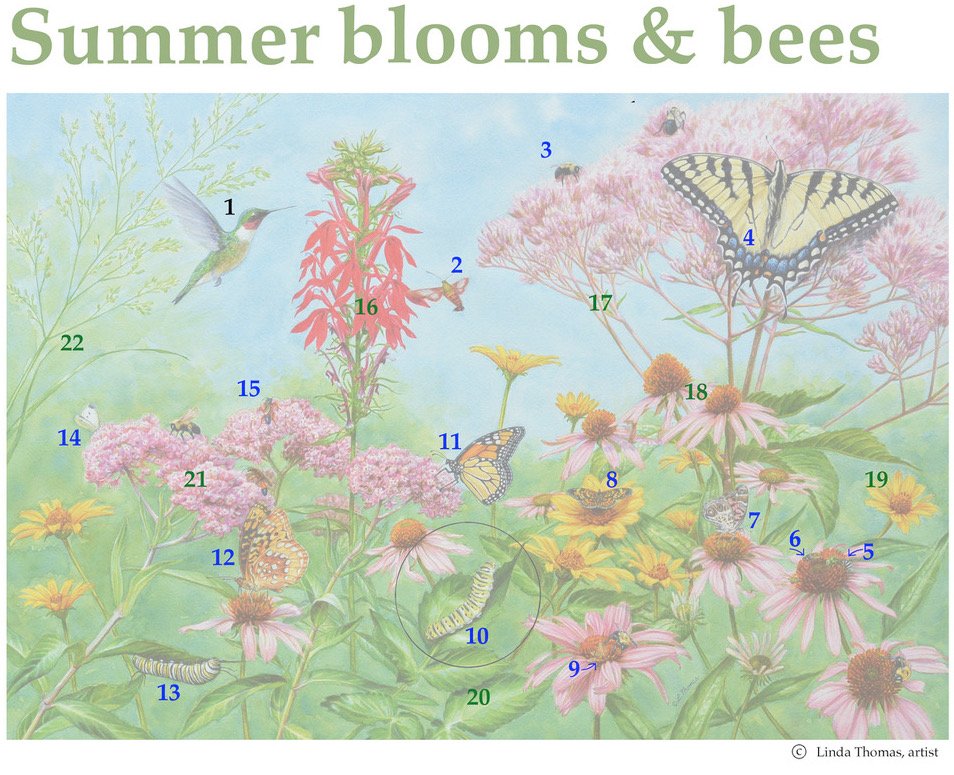
Archilochus colubris | As hummingbirds hover beside tubular flowers, they beat their wings an impressive 50 times per second. Hummingbirds also feed on small insects that they capture in mid air.
Hemaris thysbe | A hummingbird look-alike, clearwings are active during the day and they feed on nectar sources like cardinal flower – not with a tongue and bill, of course, but with an insect proboscis.
Bombus sp. | While the United States is home to 46 species of bumble bees, and Eastern bumble bees (Bombus impatiens) are common sightings, four types of bumblebees are currently recognized as endangered or at risk by scientists. The good news: many citizens have mobilized to track and record data on these insects through Bumble Bee Watch and Beecology.
A simple way to support these species is to limit or stagger your mowing regimen. Keeping off from mowing in the summer months provides an opening for red clover and other vital nectar plants.
Papilio glaucus | These majestic butterflies are nourished not only by drinking nectar but also from “puddling,” where a group of butterflies gather at a natural water source. They obtain essential nutrients like sodium ions and amino acids from these sips. Like the tiger swallowtail, we all need both food and water to survive!
While hover flies mimic the coloration of bees and wasps, they have compound eyes and a single pair of wings — they aren’t deceiving us! They don’t carry as much pollen as a bee but they visit flowers more frequently. Note that there are several species of hover flies, including Allograpta obliqua and Eristalis transversa (shown).
Green sweat bees (Agapostemon sp.), meanwhile, have an iridescent appearance that’s all their own. They arrive in two generations each summer, a balancing act of mating, nest digging, hibernation, and feeding on nectar.
Vanessa virginiensis | While you’re likely to see an American Lady visiting flower nectar, you’ll only see the caterpillars feeding at night. The caterpillars weave together leaves from their host plant with silk to create a nest — their daytime hiding place.
Phyciodes tharos | Like many butterflies, the pearl crescent’s chosen habitat is open areas. Aspetuck Land Trust’s preserves contain these larger pastures, fields, and meadows, but we’re redefining the way we steward unprotected land: the edge of your yard or your flower planting can be the stepping stone that connects the pearl crescent to larger open spaces.
Papilio polyxenes | The larvae of the black swallowtail metamorphose (change their shape and appearance) several times, from scary-looking black and white to green with yellow and black markings. Its current form is sometimes confused with the Monarch caterpillar. Our advice? Always check the host plant – you won’t find Monarchs feeding on Golden Alexanders or other plants in the parsley family, just as you won’t find black swallowtail caterpillars eating milkweed.
Danaus plexippus | Did you now that the Monarchs that we see in Connecticut migrate to central Mexico each year?I t’s a long journey. Our properties can not only provide the milkweed that Monarch caterpillars need at the beginning of the summer, but also the late-summer nectar to power the adult Monarchs in their migration between August and October.
Speyeria cybele | After an adult female butterfly lays eggs in late summer, caterpillars hatch — and then don’t feed until spring. But the adult butterflies will feed on nectar all summer!
Danaus plexippus | One of our most beloved butterflies, the Monarch has declined in population, and was listed as “endangered” in July 2022. However, so many government agencies, nonprofits, and citizens have banded together to expand food and nectar sources (across roadsides, urban gardens, butterfly gardens, and preserves) and hopefully ensure their long-term survival.
Pieris rapae | A textbook non-native species, the cabbage white butterfly was introduced to North America from Eurasia in 1860 and has been the bane of cabbage farmers ever since. Its caterpillars eat vegetables like cabbage, broccoli, kale, and cauliflower. But a pest management strategy that uses biological controls like the butterfly’s natural enemies and avoids pesticides, has been successful.
Sphex ichneumoneus | Fear not, these wasps are nonaggressive and burrow into the ground to form their nests. In fact, they perform many beneficial services: eating grasshoppers, aerating the soil as they burrow, and pollinating flowers.
Lobelia cardinalis | The cardinal flower is an example of coevolution, as a flower and pollinator formed a relationship over time that benefitted them both: hummingbirds and clearwing moths are able to access the long, slender red tubules for nectar, and in turn, the cardinal flower is pollinated!
Eutrochium maculatum | Named for the visible spots on the stem, spotted Joe Pye weed offers high-value nectar and pollen for bumble bees and the Monarch butterfly in late season.
Echinacea purpurea | While we’ve mentioned many plants that prefer wet and swampy soil, Echinacea is the choice for sunny and dry areas. It blooms for long stretches in meadows, prairies, and garden borders.
Heliopsis helianthoides | A sunflower-like plant, Heliopsis is long-blooming from June to September. It’s also easy to plant from seed.
Zizia aurea | Zizia is a host plant for the black swallowtail. In addition to spotting a caterpillar on its leaves, you might notice that it has interestingly textured leaves divided into groups of 3’s.
Asclepias incarnata | Swamp milkweed is perfect for creating Monarch habitat in wet or swampy areas. As Monarch caterpillars eat milkweed leaves, they ingest the plant’s cardiac glycosides, which they can tolerate but their predators cannot. Perhaps that’s why swamp milkweed is highly deer resistant!
Panicum virgatum | Switchgrass changes through the seasons from light green leaves, to green leaves with reddish green seed heads, to bright yellow leaves in the fall. It models the principle of gardening with nature: working with switchgrass’ natural features to accent color and texture in your garden!
